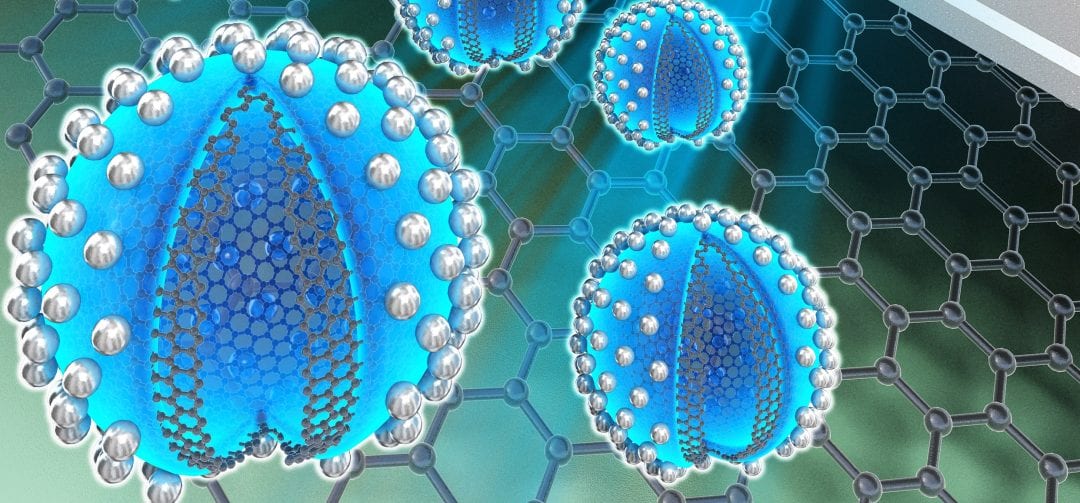Advanced Materials Interfaces is pleased to present the impressive covers of its current issue. The articles are available now on the Wiley Online Library.
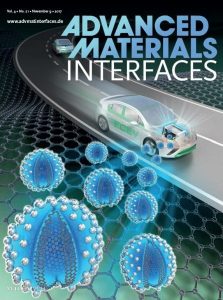 The beautiful front cover of the issue comes from Dong Ha Kim, Jin Young Kim, and co-authors. They designed a hollow, nanostructured, carbon-coated rGO-based catalyst support with high electrochemical stability. Their electrode offers an excellent overall catalytic activity with an outstanding electrochemical stability under high potential cycling, as compared to conventional carbon black support materials, which normally induce electrochemical corrosion during fuel cell operation. This indicates the potential for their catalyst support to operate in polymer electrolyte membrane fuel cells for automotive applications.
The beautiful front cover of the issue comes from Dong Ha Kim, Jin Young Kim, and co-authors. They designed a hollow, nanostructured, carbon-coated rGO-based catalyst support with high electrochemical stability. Their electrode offers an excellent overall catalytic activity with an outstanding electrochemical stability under high potential cycling, as compared to conventional carbon black support materials, which normally induce electrochemical corrosion during fuel cell operation. This indicates the potential for their catalyst support to operate in polymer electrolyte membrane fuel cells for automotive applications.
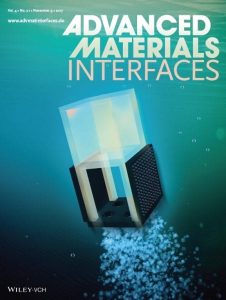 Acoustic active surfaces are developed by Peer Fischer and co-workers based on 2D arrays of acoustically resonant micro-bubbles, which provide highly directional propulsive forces in fluids through acoustic streaming. The surfaces are remotely powered by an external acoustic field and are directly attached to miniaturized robots to propel them with multiple degrees of freedom. The lovely inside cover image was provided by Alejandro Posada/MPI-IS.
Acoustic active surfaces are developed by Peer Fischer and co-workers based on 2D arrays of acoustically resonant micro-bubbles, which provide highly directional propulsive forces in fluids through acoustic streaming. The surfaces are remotely powered by an external acoustic field and are directly attached to miniaturized robots to propel them with multiple degrees of freedom. The lovely inside cover image was provided by Alejandro Posada/MPI-IS.
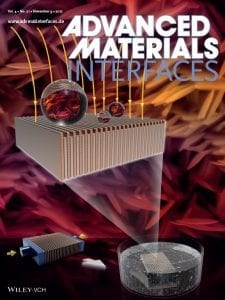 The new method from Jian Cao, Junlei Qi, and co-workers to fabricate a superhydrophobic surface with a micro-stripe array structure is highlighted on the back cover. The illustration shows this surface, which can be used in a magnetic control micro-droplet release system. The fabrication process, based on diffusion bonding and selective corrosion, appears at the bottom. The hierarchical structure of this surface is demonstrated in the background by a SEM image of CuO grown on the copper bulges.
The new method from Jian Cao, Junlei Qi, and co-workers to fabricate a superhydrophobic surface with a micro-stripe array structure is highlighted on the back cover. The illustration shows this surface, which can be used in a magnetic control micro-droplet release system. The fabrication process, based on diffusion bonding and selective corrosion, appears at the bottom. The hierarchical structure of this surface is demonstrated in the background by a SEM image of CuO grown on the copper bulges.
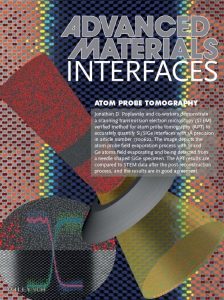 Jonathan D. Poplawsky and co-workers demonstrate a scanning transmission electron microscopy (STEM) verified method for atom probe tomography (APT) to accurately quantify Si/SiGe interfaces with 1 Å precision. Their frontispiece depicts the atom probe field evaporation process with Si and Ge atoms field evaporating and being detected from a needle shaped SiGe specimen. The APT results are compared to STEM data after the post-reconstruction process, and the results are in good agreement.
Jonathan D. Poplawsky and co-workers demonstrate a scanning transmission electron microscopy (STEM) verified method for atom probe tomography (APT) to accurately quantify Si/SiGe interfaces with 1 Å precision. Their frontispiece depicts the atom probe field evaporation process with Si and Ge atoms field evaporating and being detected from a needle shaped SiGe specimen. The APT results are compared to STEM data after the post-reconstruction process, and the results are in good agreement.

